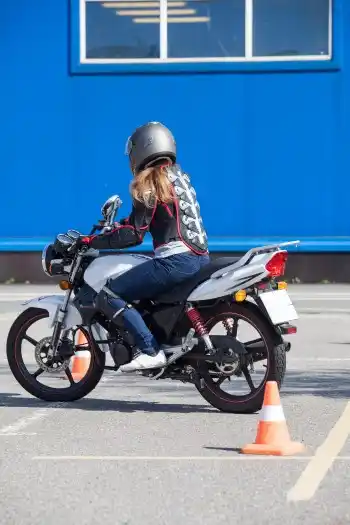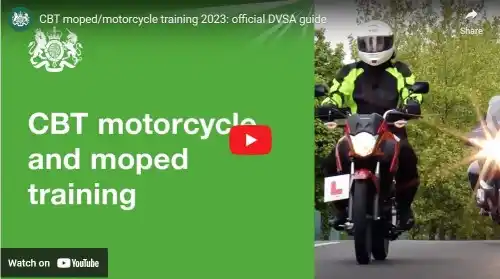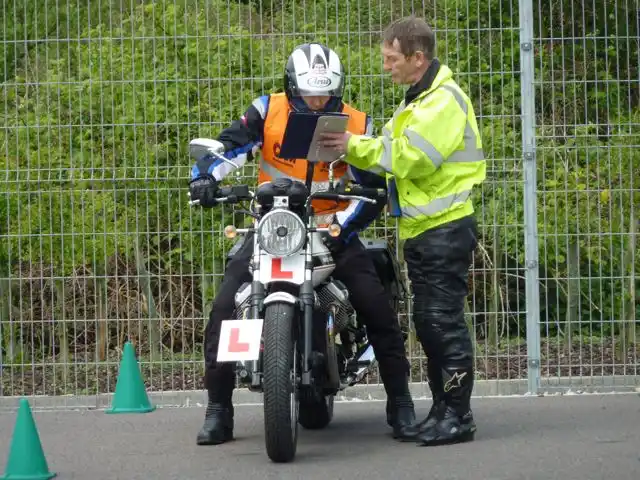Book CBT compulsory basic training in Salford, Greater Manchester with any of the companies listed here
Click on any of the motorcycle training schools below to view more information and check availability.
Moto Technique Manchester
Units 1 & 2 Millgate, Dantzic Street, Manchester, Greater Manchester, M4 4JW
Approx. distance: 2.3 miles
RJH Motorbike Training Ltd Eccles Manchester
215 Church St, Eccles, Manchester, Greater Manchester, M30 0LY
Approx. distance: 2.3 miles
Aamirs Rider Training Manchester
Sedgley Park Rugby Club, Park Lane, Whitefield, Manchester, Greater Manchester, M45 7DZ
Approx. distance: 3.7 miles
Scotti Knights Motorcycle Training Ltd Sale
Trafford MV Rugby Club, Sale, Greater Manchester, M33 6LR
Approx. distance: 4.2 miles
Road Rider School of Motorcycling Manchester
Aldwinians RUFC, Audenshaw, Manchester, Greater Manchester, M34 5SN
Approx. distance: 6.4 miles
Focus Rider Training Bury
Bury Football Club Gigg Lane, Bury, Greater Manchester, BL9 9HR
Approx. distance: 6.5 miles
Elite Rider Training Heywood
Birch Garage Yard, Manchester Road, Heywood, Greater Manchester, OL10 2QD
Approx. distance: 6.6 miles
MSM Motorcycle Training Manchester
Curzon Ashton FC, Tameside Stadium, Richmond Street, Ashton-under-Lyne, Greater Manchester, OL7 9HG
Approx. distance: 7.4 miles
Force Rider and Driver Training Bolton
Unit 7A Pilot Industrial Estate, Bolton, Greater Manchester, BL3 2ND
Approx. distance: 7.4 miles
Zen Motorcycle Training Stockport
Meyer Street, Stockport, Greater Manchester, SK3 8JE
Approx. distance: 8.3 miles

Find CBT compulsory basic training that is just right for you in Salford, Greater Manchester
Your one stop shop for finding CBT compulsory basic training close to you in Salford. We have all the information here for you to find suitable CBT compulsory basic training close to you or nearby in Pendlebury, Manchester and Eccles. Completing your 'Compulsory Basic Training' CBT test will allow you to ride any scooter, moped, electric motorbike, 50cc moped or 125cc motorbike of your choice. All you'll need to do is get a provisional UK license, suitable clothing and then book your CBT.
If I CBT compulsory basic training in Salford what would I be doing?
A CBT test consists of 5 elements labelled A to E. You will do these 5 elements in order throughout the day.
The DVSA have produced an excellent short video showing you the elements of a CBT. Here is the video and below it is the description of each of the elements.

Element A comprises of talk about clothing, safety helmet and equipment. This is also when your licence and eyesight will be checked and the aims of the course outlined. Make sure to bring your glasses or contact lenses if you wear them as you will need to read a registration plate at a distance of 20 metres. You will also learn:
- Understanding the legal requirement to riding
- Reinforcing your understanding of the Highway Code to a good level
- Objectives of completing the CBT test
- Understanding the importance of using good motorcycle equipment and clothing
Element B introduces you to the machine and its controls and includes:
- Using the motorcycle stands to safely park your bike
- Familiarity with the different motorcycle or scooter controls
- Wheel the bike round to the left and right
- Starting and stopping the engine
- Carrying out basic maintenance checks
Element C is the main part of the course and takes place on an approved training site (CBT pad). This is when you will learn to:
- Pull away, stop, start and change gears (where applicable)
- Ride in a straight line
- Ride in a slow and controlled manner
- Change gears
- Use both brakes
- Ride a figure of eight
- Carry out left, right and U-turns
- Carry out emergency braking
- Ride round bends safely
- Carry out rear observation
Element D is a return to the class room prior to going out on the road. You will get a full briefing explaining:
- The use of speed, road positioning, safe driving distances
- The importance of the Highway Code
- Your visibility on the road
- Using rear observation
- Riding at the correct speeds, road positioning and distance between other vehicles according to traffic and road conditions.
- Learning to anticipate danger and riding defensively
- Care will also be given in explaining about the radios and how not to get lost on the road
Element E is where you put all the above into practise by riding on the road. You will go out on the road with an instructor two at a time with a radio link. You must do at least two hours of road tuition, which must include doing a U-turn and emergency stop. At the outset the instructor will give plenty of guidance and help, but towards the end of the time on the road the instructor will be looking to see if you can get safely from one place to another without hurting yourself or anybody else.

Trusted by Motorcycle Training Companies in Salford, Greater Manchester
Over the years we have worked hard to ensure that all of our clients find the perfect team of experts for CBT training in Salford, we also have many different companies across Greater Manchester. If you are not sure if you area is covered, simply check our areas covered page and find the best company near you. We can ensure that all of the companies available will easily suit your needs and budget.
How can you help me find CBT training in Salford, Greater Manchester
When you use Book CBT Now to find a company for your CBT test in Salford you will only be provided with approved training bodies that meet all requirements set by the Driver and Vehicle Standards Agency. We will provide you with all the relevant details about the company along with additional information such as; whether bike hire, helmet hire and gloves and jacket hire are included, if there is parking on the premises, if there is an indoor classroom and if they have female instructors. If you would like to find out more about the company local to you then we will also provide you with their contact details.